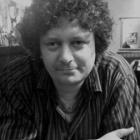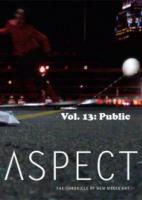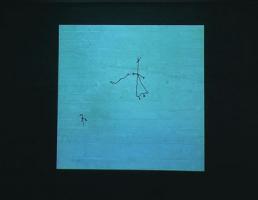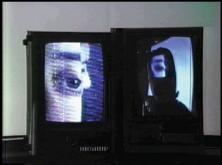Thorsten Knaub

Thorsten Knaub is an artist working with video, sound, performance and drawing. His practice often concerns itself with ideas around technology, data or information systems and how these may mediate our experiences and presence in the world.
Over the years his practice has looked at ways to represent the human body electronically and has worked with video and audio installations often made up of simple repetitive edited fragments and loops.
Using images of the body, sound or spoken words, Knaub created scenarios characterized of human existence in peril and caught in a seemingly random or absurd set of activities. In e.g. Manufractura (1997), the video/audio sequence of the artist's hand hitting a pane of glass is manipulated into various speeds, which results in an array of gestures, from a gentle stroke of the glass to a desperate beating of it, which in turn generates its own cacophonic soundtrack.
From these scenarios he moved more towards an investigation of the artist's processes and created the photographic series and artist book, What does the artist when he doesn’t do art? (1999), or combining photography, video and elements of performance in e.g. Activating the delayed shutter release and then throwing the camera above me into the air with the intention to take a picture of myself standing on the ground (2001).
Other projects include an exploration of society’s obsession with speed and instant entertainment in The Cinema Machine (2004-6) where the viewer was confronted with a maelstrom of visual and sonic information and cinematic memory, made up of 100 of the most popular movies, each sped up to mere 60 seconds in length.
In recent time the artist is particularly interested in the relationship between the individual and the environment. He has been employing GPS technology to comment on how human experiences are trans-coded into abstract positional data and explored therewith, among other themes, notions of socio-geographical space, ecological connections, memory and the artist’s gesture and process.
These projects are often characterized by an extended period of process, in which the artist is walking for several days or longer in a particular area to generate graphic representations, which are then documented as digital animations, prints, videos or a searchable archive.



